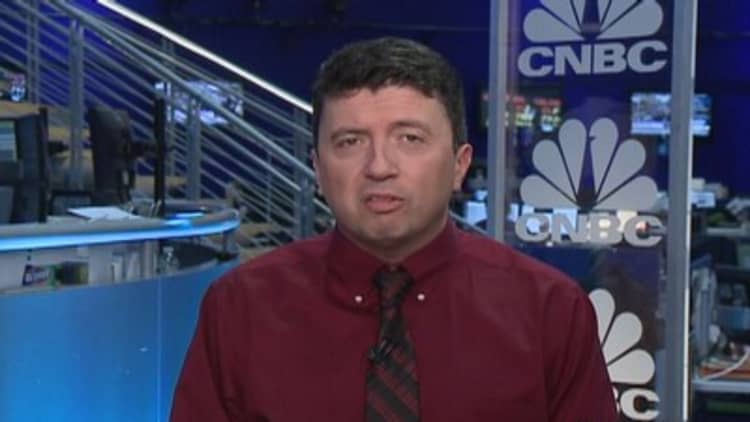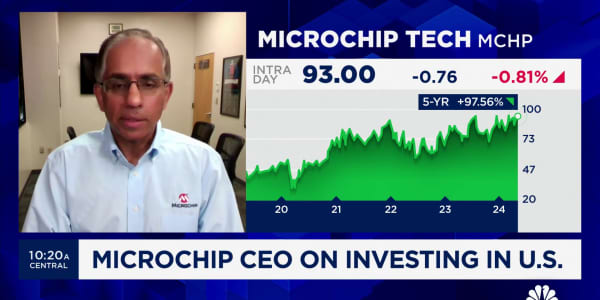
Major market averages may not have much further to fall before indicating that something considerably worse is in store.
Technical analysis is putting key stock indicators near what Walter Zimmerman, chief market technician at United-ICAP, calls the "must-hold" levels—areas that have not been violated since the March 2009 lows that kicked off the heretofore powerful bull market run.
For the , that line in the sand happens at the 1,785 level—just about 2 percent from trading levels at midday Tuesday.
For the Nasdaq, which is receiving more attention since it has suffered the steeper declines and is near a correction drop of 10 percent, the level is around 3,830—about 3.5 percent from the current mark.
Break those points, and Zimmerman warns that a highly uncomfortable time lies ahead for bullish investors.
Read MorePrepare for deeper selloff if this happens: Cashin
"We're getting very close to the must-hold, and every time this market has corrected itself since 2009 it's held the must-hold," he said in an interview. "The difference is if we now break the recent low, we will for the first time since this whole move began (suffer) a five-wave decline from the high."
Waves are patterns of market movements that technicians like Zimmerman use to predict market cycles. Historically they've been an inexact method to detect movement, but adherents believe over the long haul they can be effective tools. Zimmerman made a well-publicized call in early January for the market to break to historic highs then slump to its lowest levels since the mid-1990s.
"It's going to revive issues concerning sell-in-May-and-go-away, where May is just around the corner here," he said. "The market is looking very vulnerable."
Zimmerman cites three primary concerns with the market: Stretched valuation, a strong level of bullish sentiment and historically high levels of margin debt. As of February, investors had $465.7 billion in margin debt at the New York Stock Exchange.
Read MoreNasdaq edges toward psychological 10 percent correction
In terms of what investors should do, Zimmerman believes they should target the areas of froth—in this case small-cap stocks at a time when the is the most expensive index in the world when it comes to price to earnings. At 102.2 times trailing earnings, the index is three times the level it was a year ago and five times the level of the Nasdaq.
That type of sentiment could continue unless the market changes its volatile course soon.
"After two years of cyclical outperformance in Europe, some of the exuberance we see in investor sentiment and positioning suggests a rotation into more defensive stocks and sectors may be imminent," Obe Ejikeme, European equity and quantitative strategist at Bank of America Merrill Lynch, said in a statement accompanying the firm's monthly portfolio managers survey.
Read MoreWhy a market correction is not a bear market
Citigroup strategists put out a report this week suggesting a 5 percent to 10 percent pullback is likely "given weak (earnings per share) forward guidance and euphoric investor sentiment, not to mention the impact of the yield curve's shape on future market volatility."
Though the firm is full-year bullish with a price target of 1,975 on the S&P 500, it is suggesting "near-term tactical caution" with an underweight to sectors that are consumer sensitive as well as pharma and biotech.
"The risk is we could get quite a plunge into October. There's a lot of people thinking that would be healthy, that it would be an overdue correction," Zimmerman said. "Bubbles don't correct, they burst. That's what has me nervous."






